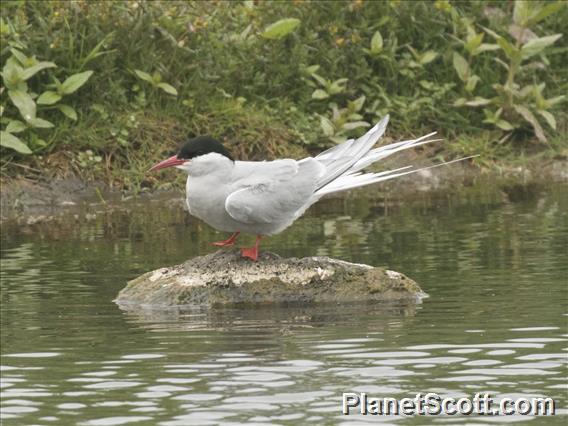Arctic Tern (Sterna paradisaea)


About Arctic Tern (Sterna paradisaea)
- Kingdom: Animals
- Phylum: Chordates
- Class: Birds
- Order: Shorebirds and Allies
- Family: Gulls, Terns, and Skimmers
The Arctic tern is a tern in the family Laridae. This bird has a circumpolar breeding distribution covering the Arctic and sub-Arctic regions of Europe, Asia, and North America. The species is strongly migratory, seeing two summers each year as it migrates along a convoluted route from its northern breeding grounds to the Antarctic coast for the southern summer and back again about six months later. Recent studies have shown average annual round-trip lengths of about 70,900 km (38,300 nmi) for birds nesting in Iceland and Greenland, and about 48,700 km (26,300 nmi) for birds nesting in the Netherlands, while an individual from the Farne Islands in Northumberland with a light level geolocator tag covered a staggering 96,000 km (52,000 nmi) in ten months from the end of one breeding season to the start of the next. These are by far the longest migrations known in the animal kingdom.
Source: Wikipedia
Trips
Visits
-
2010-05-17
Farallones Marine Sanctuary, United States of America -
2010-05-27
Kenai Peninsula, United States of America -
2010-05-29
Potter Marsh, United States of America -
2010-06-08
Talkeetna, United States of America -
2013-08-18
Farallones Marine Sanctuary, United States of America -
2014-07-16
Nome, United States of America -
2014-07-17
Nome--Safety Sound, United States of America -
2014-07-18
Nome-Kougarok Road, United States of America -
2014-07-19
Nome-Teller Hwy, United States of America -
2014-07-21
Seward, United States of America -
-
-
-
-
-
-
-
-
-
-
-
2021-09-27
Selsey, England




